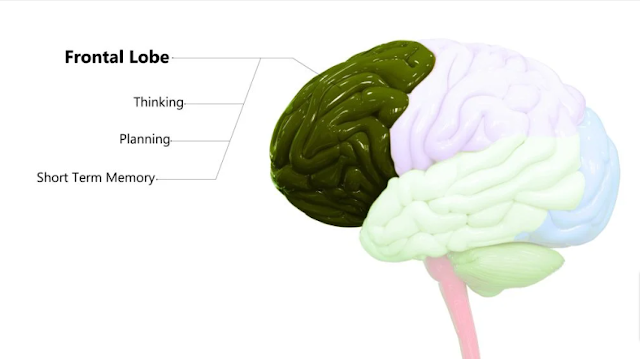The brain is the most complex part of the human body. This three-pound organ is the seat of intelligence, interpreter of the senses, initiator of body movement, and controller of behavior. Lying in its bony shell and washed by protective fluid, the brain is the source of all the qualities that define our humanity. The brain is the crown jewel of the human body.
This fact sheet is a basic introduction to the human brain. It may help you understand how the healthy brain works, how to keep it healthy, and what happens when the brain is diseased or dysfunctional.
The brain can be divided into three basic units: the
Each brain hemisphere (parts of the cerebrum) has four sections, called lobes: frontal, parietal, temporal and occipital. Each lobe controls specific functions.
Function
- Thoughts and decisions.
- Memories and emotions.
- Movements (motor function), balance and coordination.
- Perception of various sensations including pain.
- Automatic behavior such as breathing, heart rate, sleep and temperature control.
- Regulation of organ function.
- Speech and language functions.
Frontal lobes
The two frontal lobes lie directly behind the forehead. When you plan a schedule, imagine the future, or use reasoned arguments, these two lobes do much of the work. One of the ways the frontal lobes seem to do these things is by acting as short-term storage sites, allowing one idea to be kept in mind while other ideas are considered.
Motor cortex
In the rearmost portion of each frontal lobe is a motor cortex, which helps plan, control, and execute voluntary movement, or intentional movement, like moving your arm or kicking a ball.
Parietal lobes
When you enjoy a good meal—the taste, aroma, and texture of the food—two sections behind the frontal lobes called the parietal lobes are at work. Reading and arithmetic are also functions in the repertoire of each parietal lobe.
Somatosensory cortex


The forward parts of these lobes, just behind the motor areas, is the somatosensory cortex. These areas receive information about temperature, taste, touch, and movement from the rest of the body.
Occipital lobes

Temporal lobes

The last lobes on our tour of the cerebral hemispheres are the temporal lobes, which lie in front of the visual areas and nest under the parietal and frontal lobes. Whether you appreciate symphonies or rock music, your brain responds through the activity of these lobes. At the top of each temporal lobe is an area responsible for receiving information from the ears. The underside of each temporal lobe plays a crucial role in forming and retrieving memories, including those associated with music. Other parts of this lobe seem to integrate memories and sensations of taste, sound, sight, and touch.









No comments:
Post a Comment